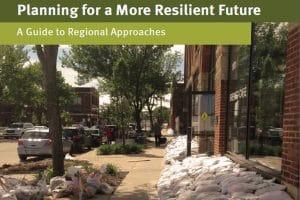
Planning for a More Resilient Future, A Guide to Regional Approaches, a joint publication between the NADO Research Foundation and the Institute of Public Policy, authored by IPP Director, Brian Dabson, highlights the importance of resilience framework and how this structure relies on the development of relationships between local, regional, state, and national agencies and organizations to determine how well a community successfully navigates a disaster. While disasters may present as environmental, social or financial, resilience reflects a community’s capacity to avoid, respond to or recover from any number of scenarios. The framework itself discusses the anatomy of an event from the initial shock, to capacity (analysis of resources and capacity), impact, (temporary dysfunction), trajectory (course of adjustment), outcome, and finally, the return to pre-shock condition or establishment of a “new normal” for a community facing a traumatic event. (Dabson, et al., 2012). As the report shows, communities living along the Missouri River and in the Midwestern tornado belt are especially vulnerable to disaster events and community capital plays a vital role in coordinating resources to help such regions align themselves with strong resilience.